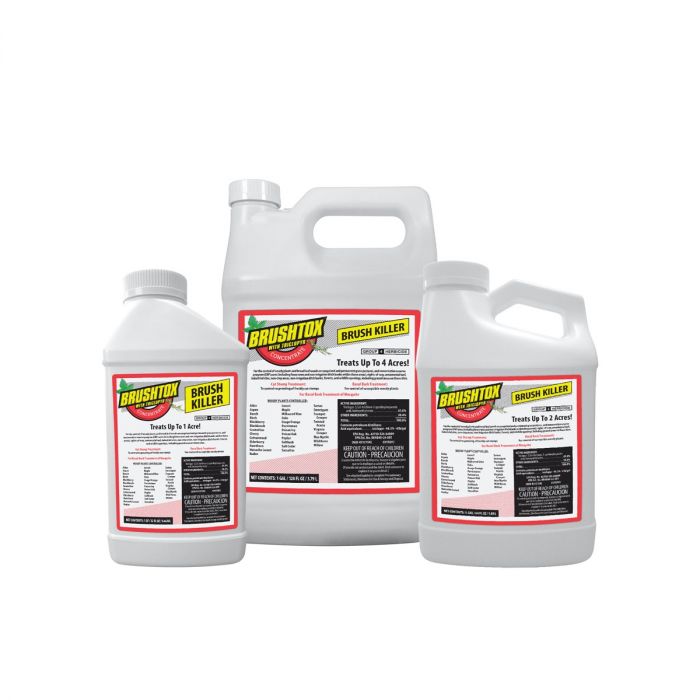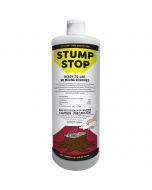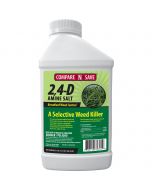Brush Killer with Triclopyr
Brush Aside Invasive Plants And Weeds
Arm yourself with our newest weapon in the fight against more than 60 woody plants including mesquite, oaks, locust, wild rose and sweetgum and 30 tough broadleaf weeds like Canada thistle and dog fennel. See label for complete list of weeds.
Brushtox is a concentrated herbicide that works both economically and effectively on rangeland, permanent grass pastures, fencerows, ditch banks and rights-of-way on acreage large and small. It may be applied to woody or herbaceous broadleaf plants as a foliar spray or as a basal bark (spraying trunk) or cut stump application to woody plants.
Where to use:
| Rights-Of-Way | Industrial Sites | Non-Crop Areas |
| Non-Irrigation Ditch Banks | Forests | Wildlife Openings |
| Rangeland And Permanent Grass Pastures | Conservation Reserve Program (CRP) Acres | Fence Rows |
| Non-Irrigation Ditch Banks | Ornamental Turf | Cut Stumps |
When to use:
The timing of a Brushtox application is critical to achieve the best results. Use tools like the USDA Planting Zones Guide for temperature and weather conditions for application timing to achieve optimum control of your woody plants or broadleaf weeds.
Optimal control is achieved when woody plants and weeds are actively growing. On difficult to control species such as ash, blackgum, choke cherry, elm, maples, oaks, pines, or winged elm or when applying in late summer when the plants are mature and during drought conditions, use the higher label rates.
For cut stump and basal bark treatments, apply at any time of year, including the winter, unless snow or water prevent spraying to the ground line.
How to use:
Mixing Directions
Apply 1 to 8 quarts per acre of BRUSHTOX to control broadleaf weeds and woody plants. Always use in sufficient water to give thorough coverage of the plants to be controlled.
Mix spray components in the following order:
- Water
- Spray thickening agent (if used)
- Surfactant (if used)
- Additional herbicide (if used)
- BRUSHTOX
Mix and apply under moderate and continuous agitation.
Broadleaf Weed Control
Apply 1 to 4 quarts of BRUSHTOX in a total volume of 5 or more gallons per acre as a water spray mixture. Apply at any time weeds are actively growing. BRUSHTOXTM at 1/4 to 3 quarts may be tank mixed with labeled rates of 2,4-D amine or low volatile ester, Tordon K, or Tordon 101 Mixture to improve the spectrum of activity. For higher viscosity spray mixtures to minimize drift or runoff potential, BRUSHTOX can be mixed with diesel oil or other inverting agent. If an inverting agent is used, read and follow the use directions and precautions on the product label.
Cut Stump Treatment
To prevent resprouting of cut stumps of susceptible species, mix 20 to 30 gallons of BRUSHTOX in enough oil to make 100 gallons of spray mixture. Apply with a low pressure backpack or knapsack sprayer using a solid cone or flat fan nozzle. Spray the root collar area, sides of the stump, and the outer portion of the cut surface including the cambium until thoroughly wet, but not to the point of runoff. Spray mixture concentration should be modified to allow for differences in size and susceptibility of species treated. Apply at any time, including in winter, unless snow or water prevent spraying to the ground line.
Basal Bark Treatment
For basal bark treatment combine one part BRUSHTOX with four parts diesel and mix thoroughly.
Stems less than 3 inches in basal diameter: Apply the spray in a 2 to 3 inch wide band to one side of stems. Direct the spray to a point approximately 12 to 24 inches above the ground.
Stems 3 or more inches in basal diameter: Treat both sides of stems. Direct the spray to a point approximately 12 to 24 inches above the ground. Better control is achieved when spray is applied to thin juvenile bark and above rough thickened mature bark.
Maximum Application Rates
The following table is a guide for the proper rate of BRUSHTOX without exceeding the maximum use rate of 8 quarts per acre:
| Spray Volume per Acre | Quarts of BRUSHTOX per 100 Gallons of Spray (Not to Exceed 8 qt/acre) |
| 400 | 2 |
| 300 | 2.7 |
| 200 | 4 |
| 100 | 8 |
| 50 | 16 |
| 20 | 40 |
| 10 | 80 |
Precautions:
- It is permissible to treat non irrigation ditch banks, seasonally dry wetlands, flood plains, deltas, marshes, swamps, bogs, and transitional areas between upland and lowland sites. Do not apply to open water such as lakes, reservoirs, rivers, streams, creeks, saltwater bays, or estuaries.
- Many forbs (herbaceous broadleafs) are susceptible to BRUSHTOX. Do not spray pastures containing desirable forbs, especially legumes such as clover, unless injury or loss of such plants can be tolerated. However, the stand and growth of established grasses usually is improved after spraying, especially when rainfall is adequate and grazing is deferred.
- Agricultural Use Requirements for Forestry Uses: For use of this product on forestry sites, follow PPE and Reentry restrictions in the Agricultural Use Requirements section of this label.
- Use Requirements for Non-Cropland Areas: No Worker Protection Standard worker entry restrictions or worker notification requirements apply when this product is applied to non-crop land.
- Local conditions may affect the use of herbicides. Consult your local specialist for advice in selecting treatments from this label to best fit local conditions.
- BRUSHTOX may injure certain turf grass species. Do not apply to bahiagrass, bentgrass, bermudagrass, centipedegrass, St. Augustine grass, or zoysiagrass, unless turf injury can be tolerated.
- While BRUSHTOX is formulated as a low volatile ester, the combination of spray contact with impervious surfaces (such as roads and rocks) and increasing ambient air temperatures may result in an increase in the volatility potential for this herbicide, increasing a risk for off-target injury to sensitive crops such as grapes and tomatoes.
Active Ingredients:
| Triclopyr: 3,5,6-trichloro-2-pyridinyloxyacetic acid, butoxyethyl ester | 61.6% |
| Other Ingredients | 39.4% |
| Total | 100.0% |
Disclaimer:
It is a violation of Federal law to use this product in a manner inconsistent with its labeling. Read the entire label before each use. Use only according to label instructions.
See the complete label for specific use rates and detailed instructions.
Consult the Safety Data Sheet (SDS) for important safety information.



